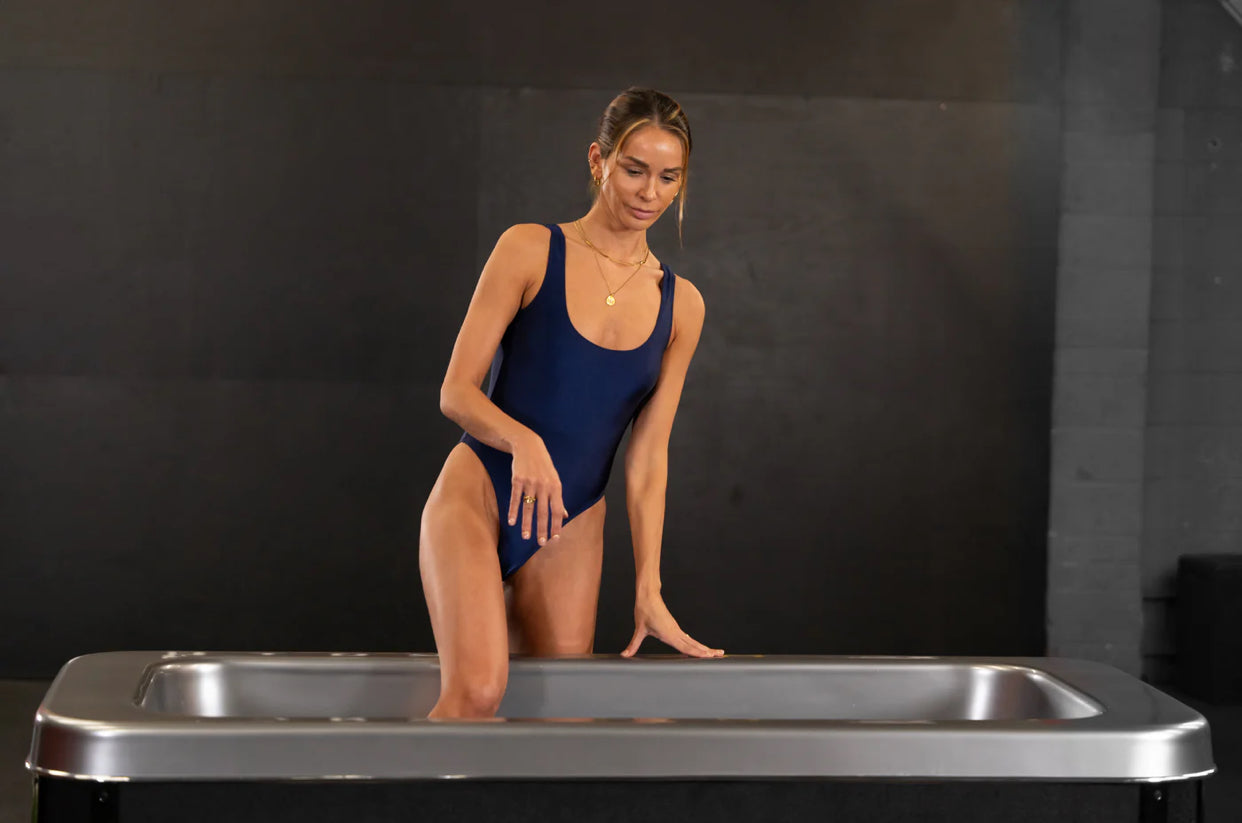Thinking of jumping into an Ice Bath Tub like a Viking? The short answer: Yes, Cold Plunges work wonders—from easing sore muscles to boosting your mood. Whether it's a Cold Plunge Tub or icy lake, this chill habit might just upgrade your health. Keep reading to find out how!

What is Cold Plunging and Why is it Gaining Popularity?
Defining Cold Plunge and Cold Water Immersion
A cold plunge involves dipping your body into water set between 10°C and 15°C. This can be done in a Cold Plunge Tub, a chilly lake, or even your own bath filled with ice.
Compared to an Ice Bath Tub, which tends to be much colder and harder to control, a Cold Plunge offers a more consistent and accessible way to practise cold therapy.
Cold water therapy is gaining ground across the UK, from city flats to countryside retreats.
Historical Context and Modern Resurgence
Cold immersion has roots in ancient healing rituals. Many cultures used cold water as a cleansing and therapeutic practice.
Recently, it’s made a strong comeback, thanks to athletes, health influencers, and social media trends. Cold Plunge videos have gone viral, often showing people powering through icy dips with grit and a grin.
Now, with Cold Plunge Tubs available for home use, it’s easier than ever to try it for yourself.
The Science-Backed Benefits of Cold Plunging
Physical Recovery and Performance
Reducing Inflammation and Muscle Soreness
Cold plunging helps reduce inflammation by constricting blood vessels and slowing tissue breakdown.
Once you rewarm, those vessels expand again, flushing out waste products and encouraging recovery.
This process may ease delayed onset muscle soreness (DOMS) and support better muscle repair after workouts.
Enhancing Athletic Recovery and Power
Post-workout cold exposure may help your muscles bounce back faster, especially after intense or explosive movement.
It can support quicker turnaround for your next session, allowing more consistent training.
Boosting Circulation
Stepping into cold water causes vessels to tighten. Afterward, they widen again, improving overall blood flow.
This can support heart health and promote better circulation throughout the body.
Mental Well-being and Resilience
Mood Enhancement and Focus
Cold plunges prompt a natural release of dopamine, noradrenaline, and endorphins.
These feel-good chemicals can sharpen focus, lift your mood, and promote mental clarity.
Many users report feeling refreshed and energised within minutes of finishing.
Stress Reduction and Mental Fortitude
Facing cold water builds tolerance to stress. Your body learns to stay calm in discomfort, training your nervous system to handle other stressors more effectively.
This can help reduce anxiety and strengthen resilience.
Potential for Improved Sleep Quality
Some people find that regular Cold Plunge sessions help them sleep more soundly.
The calming effect on the nervous system, combined with the body's natural cooldown, may support healthier sleep cycles.
Metabolic and Immune System Support
Activating Brown Fat and Boosting Metabolism
Cold exposure stimulates brown fat — a type of body fat that burns energy to produce heat.
This can boost calorie burn and raise your metabolism even at rest.
Strengthening the Immune Response
Some research suggests cold plunging may trigger an immune response. It may increase the activity of white blood cells, helping your body fight off illness more effectively.
Improving Insulin Sensitivity
Early findings also hint that cold therapy could support better blood sugar control. It may help improve how the body responds to insulin, though more research is needed.
Safe Cold Plunging: Risks, Precautions, and Best Practices

Who Should Avoid Cold Plunging? (Risks and Contraindications)
Cardiovascular and Respiratory Conditions
Those with heart conditions, high blood pressure, or respiratory issues should speak with a GP first.
Cold plunging can rapidly increase heart rate and blood pressure, which may be risky for some.
Diabetes, Circulation Issues, and Neurological Disorders
Cold water immersion can be unsafe for those with circulation problems or nerve disorders. The body may struggle to regulate temperature properly.
Other Considerations
If you're pregnant, have open wounds, or are recovering from illness, it’s best to hold off.
Always consult a healthcare professional if unsure.
How to Start Your Cold Plunge Journey Safely
Recommended Temperatures and Durations
Begin with water around 10°C to 15°C.
Keep your first dips short — about 30 seconds to 2 minutes. As your body adapts, you can slowly increase the time.
Gradual Acclimation and Listening to Your Body
Start with cold showers if you're new to cold exposure. Always listen to your body. If you feel dizzy, extremely cold, or unwell, exit immediately.
Breathing Techniques for Cold Exposure
Use slow, deep breaths to control your response. It helps reduce shock and keeps your body calm in the water.
Proper Post-Plunge Rewarming
Warm up naturally with movement, dry clothes, and a hot drink.
Avoid jumping straight into a hot shower, as it may be too harsh after cold exposure.
Setting Up Your Cold Plunge (Optional)
At-Home Options
You can make your own Cold Plunge by filling a bath with ice or buying a Cold Plunge Tub for more control.
Some come with built-in chillers, timers, and filtration systems for ease of use.
Professional Cold Plunge Centres
Wellness centres and gyms across the UK now offer Cold Plunge access.
These facilities are ideal if you want guidance, safety supervision, or just a more social way to plunge.
Takeaways
-
Cold plunging supports recovery, immunity, mood, and mental toughness
-
An Ice Bath Tub is colder and harsher — a Cold Plunge Tub is more manageable for daily use
-
Benefits range from reducing soreness to improving focus and metabolism
-
Safety is key — start slow, breathe steadily, and warm up gently
-
Whether at home or in a studio, Cold Plunge therapy is a powerful wellness tool.






